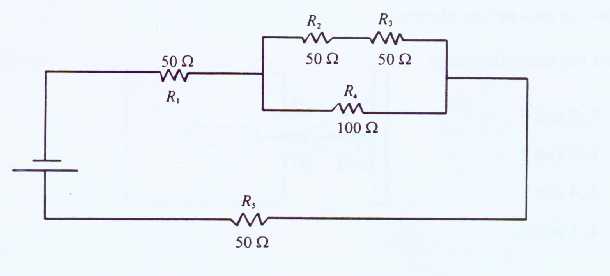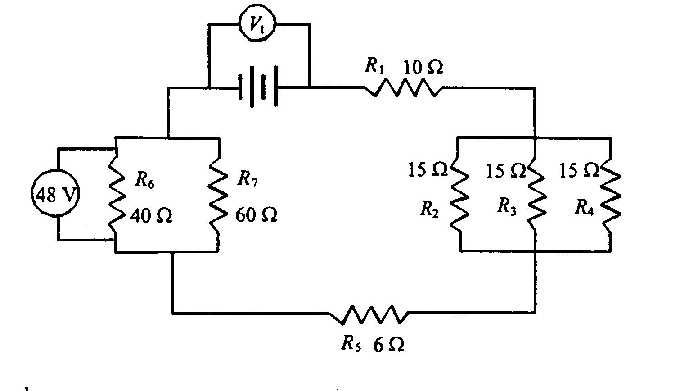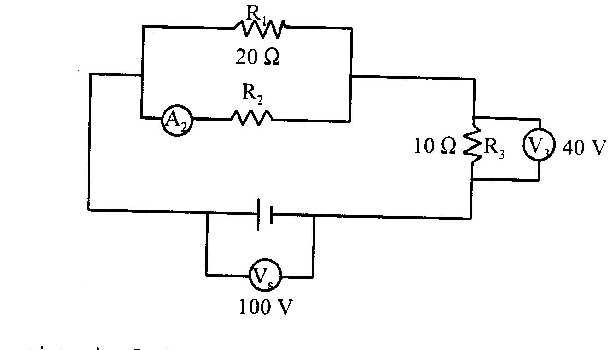
Sample Questions:
1. (JUNE 2000: 430): What is the equivalent resistance (Req) of the entire circuit shown below?

Answer:
R2 and R3 are in series, so R = R2 + R3 = 50 + 50 = 100 W. But this calculated R is in parallel with R4, so (1/Rp)=(1/R)+(1/R4)
(1/Rp)=(1/100)+(1/100)=(2/100)
Rp=100/2 = 50 W.
Finally Rp, R1 and R5 are in series, so Req = 50 + 50 + 50 = 150 W.
2. (JUNE 2000: 430): What is the total voltage Vt(voltage at source) of the following circuit?

Answer:
There are four parts to this circuit:
Since the four parts are in series, RT = 10 + 5 + 6 + 24= 45 W.
To get the voltage at the source (total voltage), we can apply Ohm's Law, but we first need the total current.
The voltage for part(4) is given : V4 = 48 V . Since V4 = IRp4, 48 = I (24); I = 2 A.
Now we're ready for Vt = IRT =(2)(45)= 90 V. Remember we can do this because, in series, current is constant.
3. (JUNE 1999: 430): What is the current intensity, I2, through resistor R2?

Answer: The parallel branch experiences a voltage drop of 100 - 40 = 60 V. Why? Because the parallel part is in series with R3, so VT = Vp + V3.
Voltage is constant inside the parallel branch, so Vp/R1 = I1= 60/20 = 3 A.
I1 + I2 = It. To get It, look at R3. V3 = IR3; 40 = It (10); It = 4 A. (In series, current is constant.)
3
+ I2 = 4.I2 = 1 A